Turkish tank forces: imports, wars and projects
Between wars
During the First World War, the Ottoman Empire adopted several types of armored cars and actively used them, but there were no tanks in its army. This situation persisted for a long time and began to change only in the twenties - after the collapse of the empire and the proclamation of the Turkish Republic.
Turkey acquired its first tanks for its army from France in 1921 (according to other data, in 1928). These were cars of the Renault FT type - not the newest, but quite suitable for exploitation. These tanks were handed over to an artillery school in Maltepe near Istanbul, where they were brought into a training company. French tanks were intended only for training personnel, gaining experience and developing tactics for armored vehicles on the battlefield. According to various sources, this technique remained in service until the second half of the thirties.
Political disagreements soon made it impossible to purchase armored vehicles from a number of countries, and their own industry could not build it. In this regard, in 1932, Ankara ordered new tanks and other vehicles for the army from the USSR. The order provided for the supply of 64 T-26 light tanks in various versions and X-NUMX T-5 tank tanks. The last batch of vehicles arrived in Turkey in 27 year.
For the operation of new tanks, the first tank battalion in the army was formed, which included two companies (102 and 103). The battalion was based in Lüleburgaz. As the purchase of armored cars and the formation of the relevant parts, new transformations were carried out. For some time the tank battalion was part of the 2 Cavalry Division. In 1937, all these units were transformed into the 1 armored brigade.
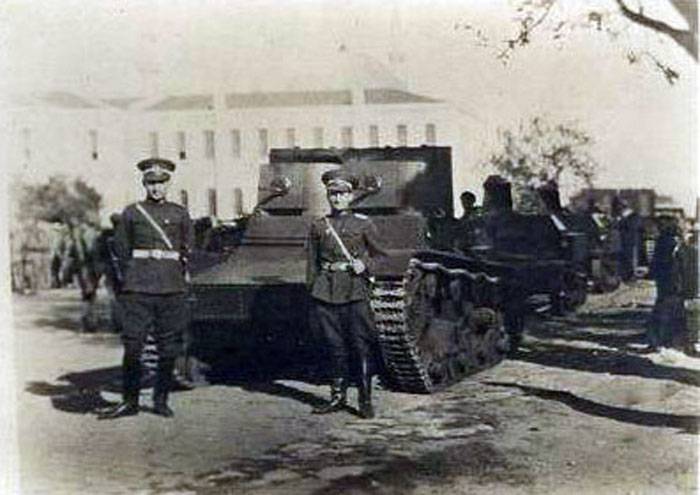
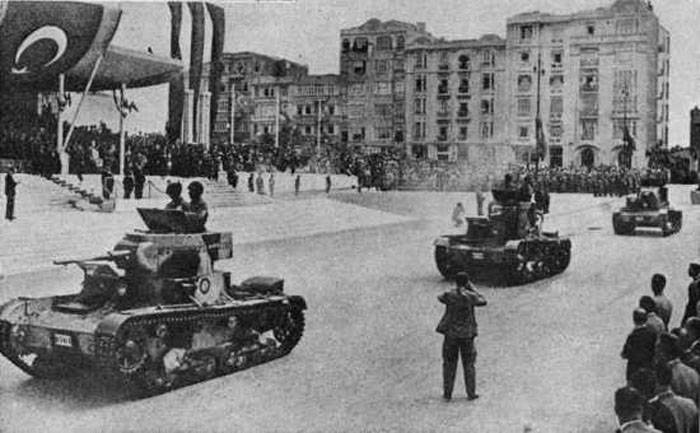
Turkish tanks T-26. Photo Tankfront.ru
By the beginning of World War II, there were several types of 80-90 tanks in the army of the Turkish Republic. The basis of the armored troops were the Soviet T-26. There was also a fairly large fleet of imported armored vehicles that complemented the tanks. Thus, the Turkish tank forces at that time could not be called developed, numerous and modern.
War and neutrality
During World War II, Turkey officially supported neutrality, but this did not prevent it from purchasing armored vehicles, including from belligerent countries. Already at the beginning of 1940, seeing the latest events in Europe, the Turkish command signed several new contracts for the supply of armored vehicles, including tanks. In addition, in the same year, the 1-I tank brigade was transformed into a regiment.
Ankara has agreed with Paris on the construction and transfer of 100 infantry tanks Renault R35. Until June 1940, France managed to transfer to the customer two lots of vehicles with 50 units each. Soon British light tanks Vickers Light Tank Mk VIB arrived in Turkey in the number of 16 units. For known reasons, for some time the supply of armored vehicles from France and the UK stopped.
In 1942, the 1 armored regiment was transferred to a potentially dangerous area - to Istanbul. Neutral status allowed tankers to continue their peaceful service, but there were certain risks. The political processes of that time allowed Turkey to get new tanks, this time from Nazi Germany. Berlin offered dozens of tanks in exchange for assistance in hostilities against the Soviet Union.
In the spring of 1943, Germany sent 56 medium tanks Panzer III Ausf.J / H with 50-mm cannons and 15 medium Panzer IV Ausf G. to Turkey. The army adopted this technique and with its help formed the 6 armored regiment based in Ankara. However, Turkey accepted tanks as a regular purchase and did not join the Axis.
The anti-Hitler coalition also tried to lure neutral Turkey to its side. To this end, at the end of the same 1943, the USA transferred the 220 tanks M3 Stuart and 25 M4 Sherman to the Turkish army 180. The UK has allocated 150 units for Valentine, 60 lightweight Vickers Mk VI and 1 Universal Carrier armored personnel carriers. Coalition deliveries allowed the Turkish army to intensify with two new armored brigades stationed in Istanbul. The existing 3 brigade was renamed XNUMX and equipped with American and British equipment.
In 1944, two brigades joined the 3 Armored Division, which was armed with German, British and American tanks at the same time. In addition, the division had units equipped with light armored vehicles from the Allies.
Thus, until the end of World War II, neutral Turkey, which was of interest to both coalitions, managed to increase its armored forces through imports. The total number of tanks exceeded 750 units; existing regiments had to be supplemented with new ones and brought together in divisions. However, Turkey still could not compare with the leading countries in the number and quality of tanks. At the same time, she was among the regional leaders.
The tanks received during the Second World War remained in service until the fifties and sixties. To the extent possible, Ankara upgraded its fleet of equipment and replaced outdated samples with new ones. Depending on the state, the tanks went to the smelter or rework. In the latter case, they continued to serve in new roles.
Cold war
Turkey continued to exploit existing tanks during World War II until the early 1950s. Then they had to be used during the Korean War, and the results of the battles showed the need to upgrade the fleet of armored vehicles. In February 1952, the Republic of Turkey joined NATO, which greatly facilitated the purchase of new weapons and equipment of foreign production.
Immediately after joining NATO, Ankara ordered large quantities of American weapons at bargain prices. So, the army bought 238 light tanks M24 Chaffee and 100 machines M41 Walker Buldog. The equipment entered the existing connections, but at the same time it was necessary to form several new regiments and divisions. It is curious that most of the compounds formed in the early fifties, in one form or another, continues to serve until now.
In the late fifties, Turkey began to acquire American-made M47 Patton medium tanks, and the process of their purchase was significantly extended. Initially, the tanks were shipped from the United States, but later an agreement appeared between Turkey and Germany. In total, the Turkish army received almost 1350 Pattons. Tanks M47 served for several decades and were written off only by the end of the XX century.
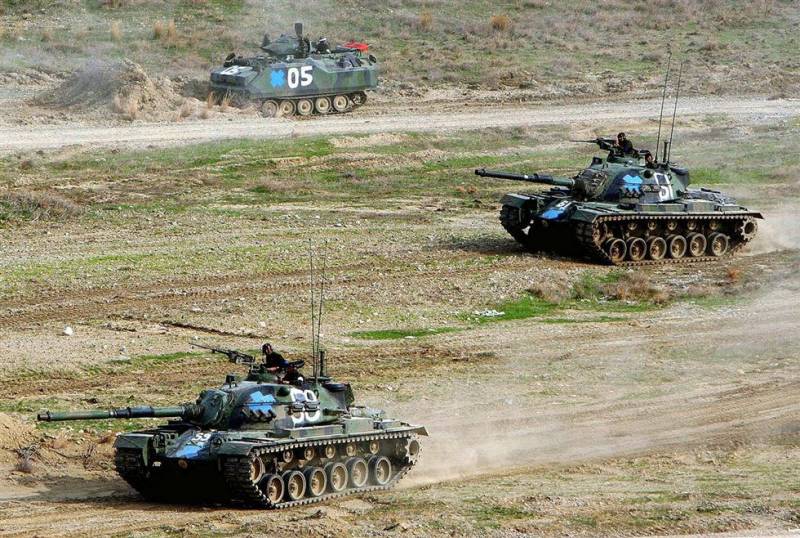
Armored American production at the exercises. In the foreground - tank M48. Photo by Kadir Aksoy / flickr.com
After the M47, the Turkish military began to purchase the medium tanks M48 Patton. According to some reports, with their help, it was possible to complete the re-equipment started earlier and finally abandon the equipment of the Second World War. First, new and "used" tanks were purchased from the US, and then the treaty with the FRG reappeared. In total, more than 3 thousand M48 tanks were purchased. As they continued their service, they underwent modernization projects of Turkish and foreign development. Currently, around the M760 48 tanks of later modifications remain in service; other machines are in storage.
In July-August 1974, the Turkish armored forces took part in a real operation for the first time. During the fighting in Cyprus, Turkey lost about two dozen medium tanks M47 and M48 - about 10% of the entire tank group that participated in the operation. However, the losses had virtually no effect on the overall combat effectiveness of the troops.
In 1980, Turkey signed a new agreement with Germany, and this time it was planned to transfer tanks of not American, but German production. Up to and including the 1983, the Turkish army received the first 77 tanks of the Leopard 1, and supplies continued. Until the mid-nineties, Turkey adopted the 170 machines modified Leopard 1A1 and 227 Leopard 1A3. Four hundred of these tanks continue to serve until now. At the beginning of the two thousandth, a modernization program started under the project Leopard 1T, but only 170 tanks were updated. Then the program was closed due to lack of funding.
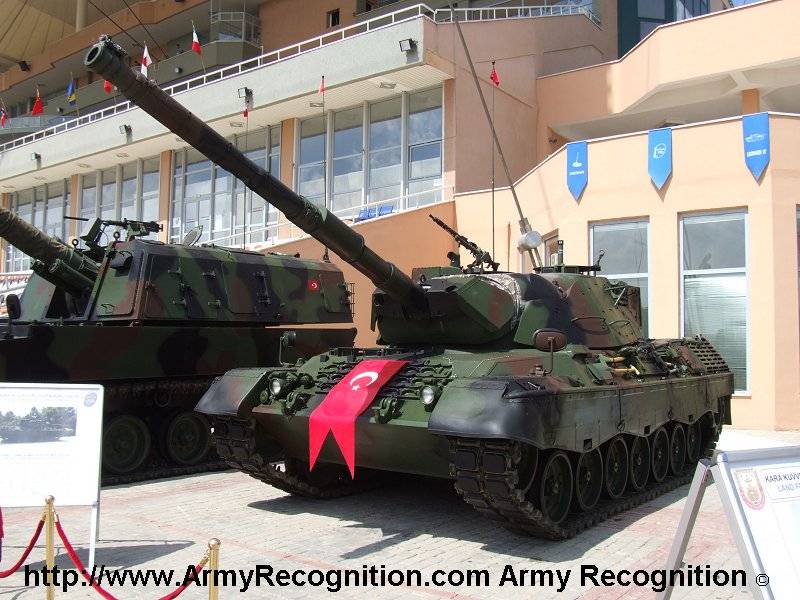
Tank Leopard 1T. Photo Armyrecognition.com
Thanks to the German supply of "Leopards", in the eighties, Turkish armored troops reached the peak of their development. After the purchase of new equipment and prior to the decommissioning of outdated units in the front, there were 3750 tanks. They served as part of the 1 armored, 2 mechanized and 14 infantry divisions. Comparable quantities of machinery have already been stored. In the future, the number of tanks and tank units was gradually reduced, both because of the moral and physical obsolescence of equipment, and because of changes in the strategic situation.
The newest story
Even before the first "Leopards", Turkey managed to get a certain number of American tanks M60 Patton, but in their number they were inferior to any other vehicle. However, in 1990, the situation has changed. In connection with the signing of the Treaty on Conventional Armed Forces in Europe, the NATO command decided to transfer additional weapons and equipment to Turkey. In the 1990-92, the Turkish units received more than the latest 900 M60 tanks with the latest modifications. This made it possible to strengthen the grouping of NATO troops in the south, ensuring compliance with the conditions of the CFE Treaty.
Almost all M60 tanks still remain in service. Several programs have been implemented to modernize such equipment. The most advanced are the armored version M60 Sabra Mk III, designed and manufactured with the participation of Israel. The M60 family of tanks is currently the most numerous in the military units of the Turkish army.
Already in 1990, due to the deterioration of the international situation, Turkish tanks of various types were deployed on the border with Iraq. Preparation for possible hostilities revealed both strengths and problems of the Turkish armored forces. According to the results of these events, certain measures were taken.
The new stage of rearmament started only in 2005, when the Turkish military again agreed with the Germans. This time it was planned to acquire more 350 main tanks Leopard 2A4, previously owned by the Bundeswehr. Shortly after the transfer of the new owner of these machines have been upgraded, made by the Turkish and foreign industries.
Several years ago, the Turkish tank units again had to participate in battles. This time they were attracted to solving military-political tasks on the territory of Syria. The illiterate organization of combat work, the specifics of the hostilities, and the presence of modern weapons by the enemy led to certain consequences. Turkey has repeatedly lost its tanks, including the relatively new "Leopard 2." The Syrian war is not over yet, and therefore it cannot be excluded that Turkish tanks will go into battle in the future. This, in turn, may lead to new losses.
Near future
According to open data, there are currently more than 2400 tanks in the armored units of Turkey, and several thousand more obsolete vehicles are in storage. It is easy to see that quantity does not go into quality. The bulk of the Turkish tanks - the machines of past generations, past several upgrades. All this in a known manner limits the real potential of the troops, and also leads to serious risks.
In the near future, Turkey will have to decommission the remaining 750 tanks M48 - this technique is outdated morally and develops its resource. Later, the further fate of the M60 tanks (with the exception of the Sabra version) and the Leopard 1 will be under question. Thus, by the end of the twenties, the total number of Turkish tank forces could be reduced by at least a third. It is long overdue for a new tank that can replace outdated ones.
For decades, Turkey could only repair and modernize tanks, while the development and construction of new ones was beyond its power. Since 2005, several Turkish enterprises, with the assistance of foreign firms, have been developing the promising Altay main tank. In 2015, the first prototype came out for testing, and in November, the 2018 had a contract for mass production.
The first contract provides for the construction of 250 tanks in two batches of 40 and 210 units. The first batch will be the installation and will be similar to the prototype; subsequent machines must fully comply with the full project. After completing an existing order, a new one is expected. According to current plans, a total of 1000 “Altaev” will be built in the future.
In the distant future, the Altay tank should become the main one not only by classification, but also by the number and role of the troops. The construction of such equipment will be accompanied by the gradual write-off of obsolete armored vehicles. After the delivery of the thousandth "Altai", the total number of armored troops in Turkey will noticeably decrease in comparison with the current one, but the loss in quantity should be compensated by the quality - capabilities and characteristics of the new technology.
***
About a hundred years ago, the Republic of Turkey bought the first tanks to train personnel and gain the necessary experience. In the future, the number of tank armies has steadily increased due to foreign supplies. In the eighties, the purchase of foreign technology allowed us to get the maximum performance and the corresponding combat power. Nevertheless, such results did not exclude a high dependence on imports from third countries.
The second century of its history Turkish armored troops are met with a significant proportion of outdated vehicles and with an order for the latest models of its own production. In the future, the total number of tanks in the troops will be reduced, but losses in quantity will be replenished with quality. At the expense of the latter, the command plans to retain tank units as a strike force capable of helping in the struggle for regional leadership. Whether Turkey will be able to fulfill all relevant plans or it will have to re-buy imported equipment - time will tell.
On the materials of the sites:
http://kkk.tsk.tr/
http://globalsecurity.org/
https://armyrecognition.com/
https://fas.org/
http://tanks-encyclopedia.com/
https://defence-blog.com/
http://military-today.com/
http://the.shadock.free.fr/
https://defenseindustrydaily.com/
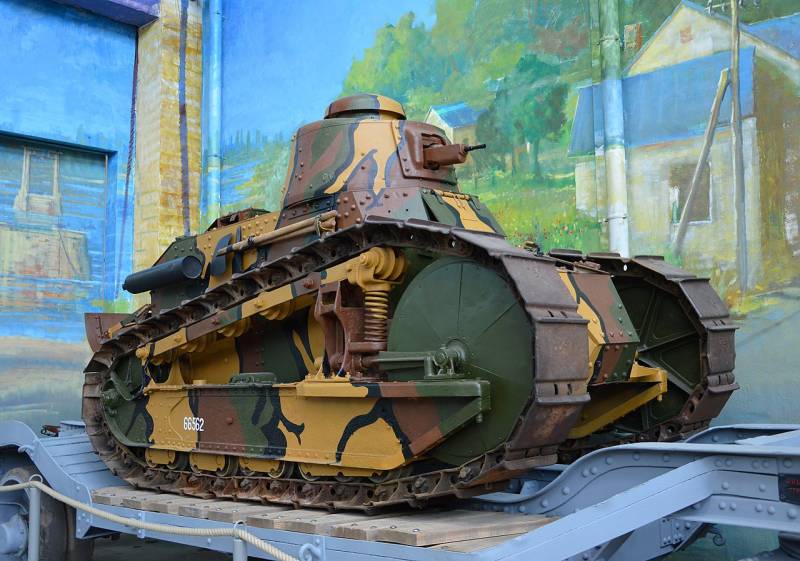
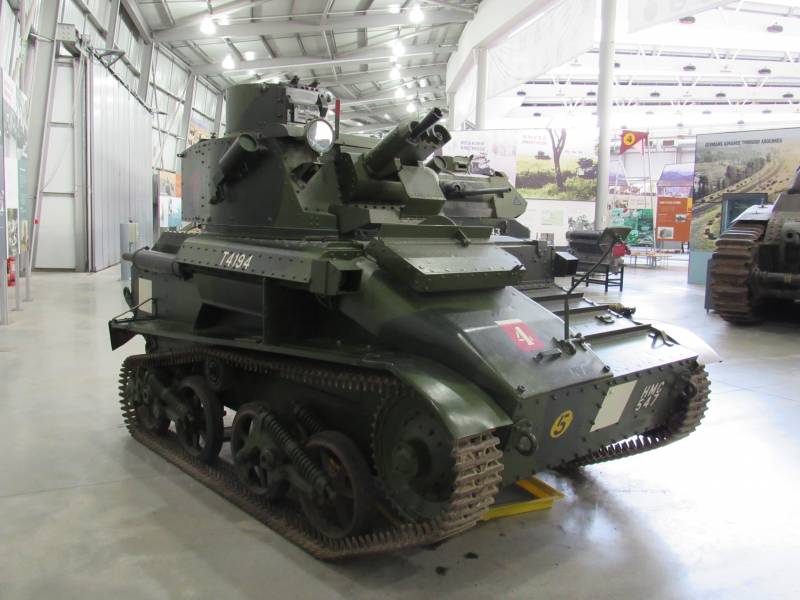
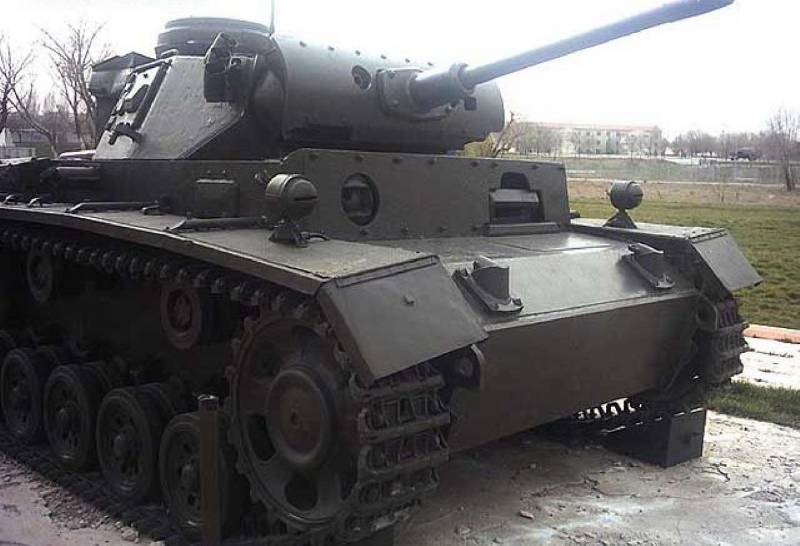
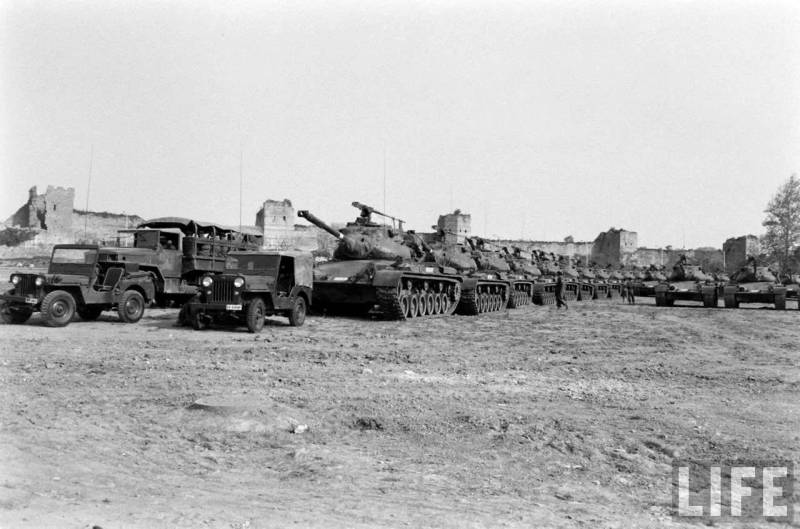
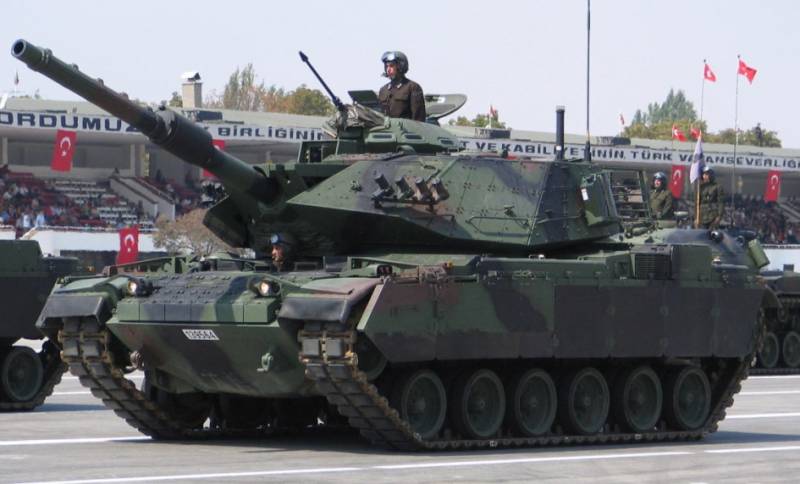
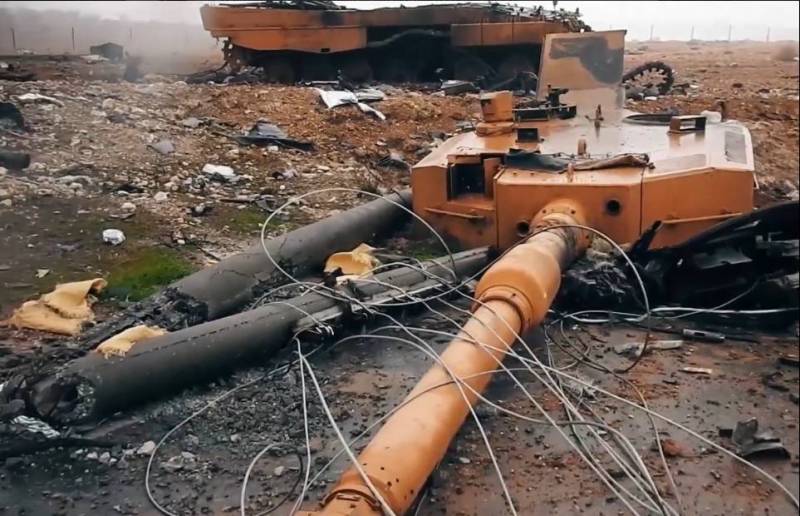
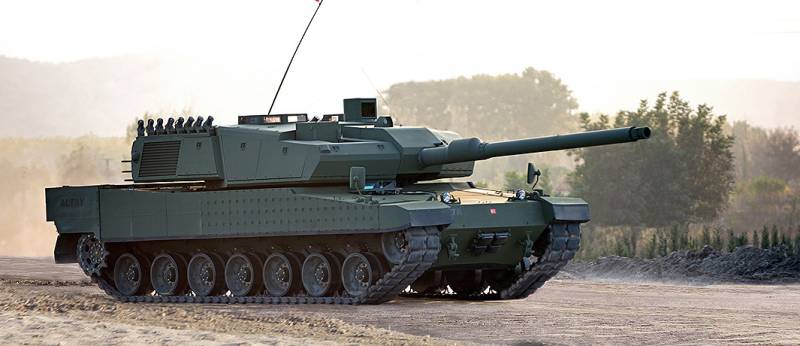
Information